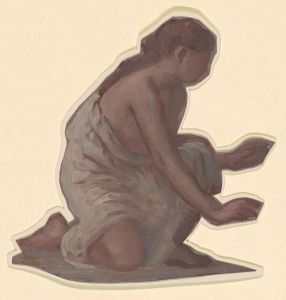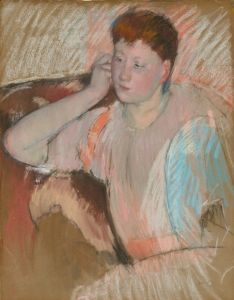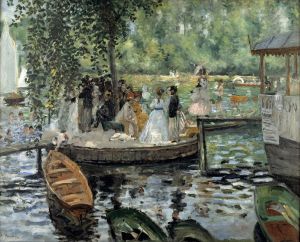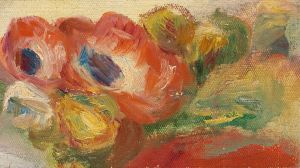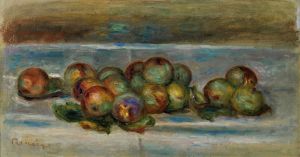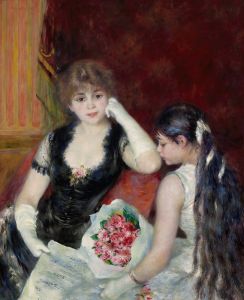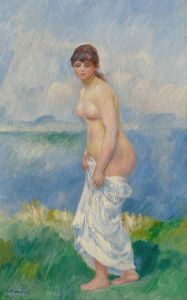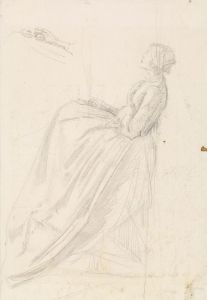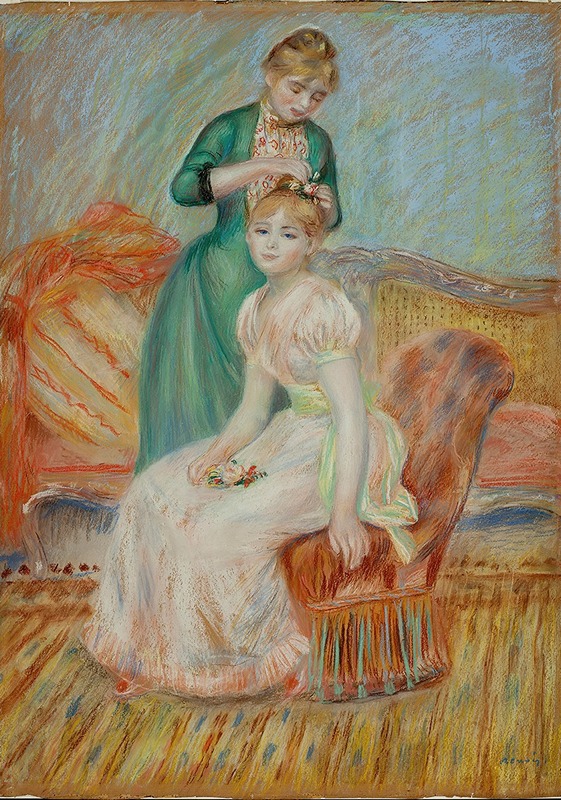
La Toilette
A hand-painted replica of Pierre-Auguste Renoir’s masterpiece La Toilette, meticulously crafted by professional artists to capture the true essence of the original. Each piece is created with museum-quality canvas and rare mineral pigments, carefully painted by experienced artists with delicate brushstrokes and rich, layered colors to perfectly recreate the texture of the original artwork. Unlike machine-printed reproductions, this hand-painted version brings the painting to life, infused with the artist’s emotions and skill in every stroke. Whether for personal collection or home decoration, it instantly elevates the artistic atmosphere of any space.
Pierre-Auguste Renoir's La Toilette is a notable painting by the French Impressionist artist, created in 1885. Renoir, known for his vibrant use of color and his focus on capturing the beauty of everyday life, often explored themes of intimacy and domesticity in his works. La Toilette exemplifies these themes, depicting a woman engaged in the private act of grooming or dressing, a subject that aligns with Renoir's interest in portraying the human figure in moments of quiet reflection.
The painting showcases Renoir's characteristic soft brushwork and his ability to render the human form with a sense of warmth and vitality. The figure in La Toilette is bathed in a gentle, diffused light, which enhances the sense of intimacy and draws attention to the textures of the skin, fabric, and surrounding environment. Renoir's use of light and color creates a harmonious composition, emphasizing the natural beauty of the scene.
During the 1880s, Renoir began to move away from the more spontaneous and loose brushwork typical of early Impressionism. Instead, he adopted a more structured and refined approach, often referred to as his "Ingres period," named after the French Neoclassical painter Jean-Auguste-Dominique Ingres. This shift is evident in La Toilette, where the contours of the figure are more defined, and the composition reflects a balance between Impressionist techniques and classical influences.
The painting is part of a broader tradition in Western art that explores the theme of women at their toilette, a subject that has been depicted by artists for centuries. Renoir's interpretation, however, is distinct in its focus on the sensuality and tenderness of the moment, avoiding overtly dramatic or idealized representations.
La Toilette is housed in the Musée d'Orsay in Paris, France, which holds an extensive collection of Impressionist and Post-Impressionist masterpieces. The museum's collection provides important context for understanding Renoir's work within the broader development of 19th-century art.
Renoir's La Toilette continues to be celebrated for its technical mastery and its ability to capture the quiet beauty of everyday life. It remains a significant example of the artist's evolving style during the mid-1880s and his enduring fascination with the human form.





